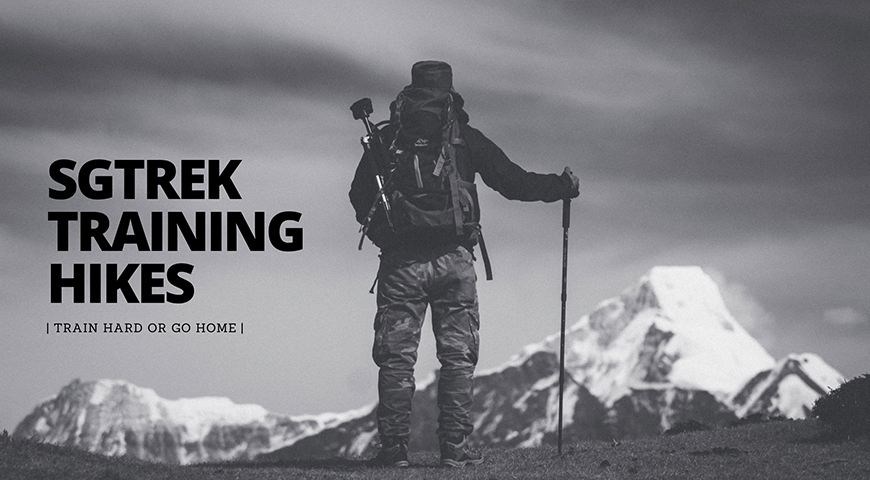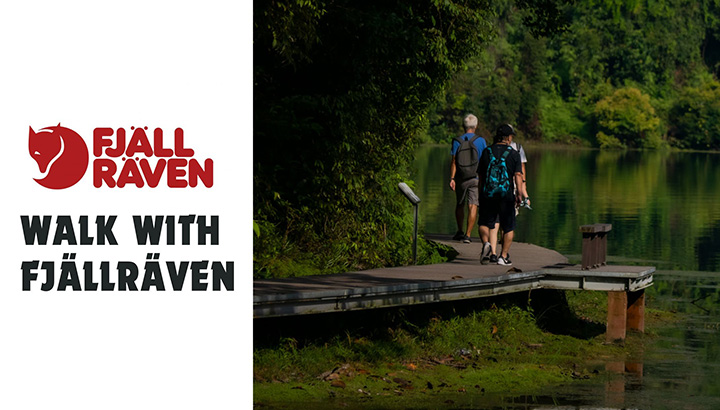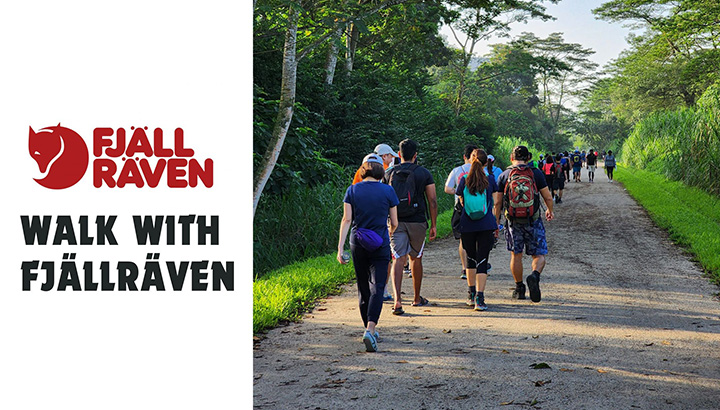
Bhutan, a Buddhist kingdom on the Himalayas’ eastern edge, is known for its monasteries, fortresses (or dzongs) and dramatic landscapes that range from subtropical plains to steep mountains and valleys. In the High Himalayas, peaks such as 7,326m Jomolhari are popular trekking destinations. Paro Taktsang monastery (also known as Tiger’s Nest) clings to cliffs above the forested Paro Valley.

The Bum Dra trek is one of the most beautiful short duration trek in Bhutan with only one night camping in the wild. But the scenery and landscape may well be worth compared to all of the other treks and also in terms of the adventure and the experience that goes along as you hike up. Also called the ‘The Trek of the Thousand Dakinis’ (celestial female beings) you can even explore the numerous sacred and holy caves where the angels had convened. You can also get a spectacular view of the Taktsang Monastery from the top which you will not see from the usual tourist route.
EVENT DATE: 01-09May2020 (*only 4days leave needed)
EVENT COST: (*land cost only)
- 2-4Pax: SGD2680/Pax
- 5-8Pax: SGD2280/Pax
- 10Pax and Above: SGD1900/Pax
*single supplement SGD450/Pax additional. (*Subjective to flights and room availability)
Payment Terms:
- First Term: Deposit $2000 for booking confirmation (Flight tickets will be reserved)
- Second Term: Final payment before 29Feb2020
TRIP DETAILS:
Day 1: Arrive Paro & Paro-Thimphu (Distance: 54 km, estimated driving time: 1 hr.)
Fly into Paro by DrukAir / Bhutan Airline After completing your immigration formalities, you will be received by our representative who will be your tour guide throughout your tour.
Then drive to Thimphu, on arrival at Thimphu check into your hotel and after refreshment visit the following:
- Kuensel Phodrang and visit tallest buddha statue and enjoy the full view of Thimphu Valley below.
- National Memorial Chorten, chorten literally means ‘ seat of faith’ and Buddhists often call such monuments the ‘Mind of Buddha’. Meet the elderly local in circumambulation at the National Memorial Chorten.
Takin Preserve, which houses the national animal the Takin that is only found in Bhutan. This is an extremely rare member of the goat family. Found in herds in the very high altitudes (13,125ft and over). They live on a diet of grass and bamboo. It can weigh as much as 550 pounds.
- Tashichhoe Dzong, a fortress of the glorious religion. It was built in 1641 by Zhabdrung Ngawang Namgyel and was reconstructed into present structure by the late King, His majesty Jigme Dorji Wangchuck in the year 1962-1969. It houses the secretariat building, the throne room and the office of the king, and the central monk body.
- Craft Bazaar -A one stop place to witness Bhutanese culture and buy Bhutan made art and craft product. The Bazaar in its 80 stalls covers all aspects of the traditional arts and crafts of Bhutan. At this Bazaar craftsmen and artisans from across the country display and sell their handicrafts. And visit other handicraft stores.
Overnight at Thimphu
Day 02: Thimphu sightseeing
After breakfast visit following place:
Institute for Zorig Chusum
Commonly known as Arts & Crafts School or Painting School, the Institute offers a six-year course on the 13 traditional arts and crafts ofBhutan. On a visit, one can see students learning the various skills taught at the school.
Coronation Park
Located on the banks of the river (near the city stadium), this 5.6 acres of parkland offer a pleasant and relaxing environment to stroll or to sit and watch the river flow by.
The Folk Heritage Museum (Phelchey Toenkhyim)
It is dedicated to connecting people to the Bhutanese rural past through exhibits, demonstrations, educational programmes and documentation of rural life. The principal exhibit in the museum is a restored three storey traditional rammed mud and timber house, which dates to the mid-19th century. The design and form of house is that of an average household in the Wang area during that era. The age of structure demonstrates the durability and performance of the building materials. From ground to top floor, household objects, typical domestic tools and equipment’s that would have been used by a family during that period are put on display. The museum is also developing some of the native trees and plants that were used for various domestic purposes in the rural households.
Changangkha Lhakhang
It is a fortress like temple and monastic school perched on a ridge above Thimphu, south of Motithang. The temple was established in 12th century on a site chosen by Lama Phajo Drugom Shigpo, who came from Tibet. The central statue here is Chenrezig in a manifestation with 11 heads. From temple courtyard, there is fascinating view of Thimphu valley.
Weekend Market
Every Saturday and Sunday most of Thimphu’s scant population and many valley dwellers congregate on the banks of the river where weekend market is held. It is an interesting place to visit and provides opportunity to mingle with the local people.
Overnight at Thimphu
Day 03: Thimphu-Punakha (Distance: 71 km, estimated driving time: 2 ½ hours)
After breakfast, travel to Punakha through Dochula Pass 3140 m). In the clear spring sky, you can enjoy the panoramic view of the Himalayan Mountain ranges. Then pass by the beautiful 108 chortens built on the hill by Her Majesty Ashi Dorji Wangmo Wangchuck (Queen Mother of Bhutan) for the security and wellbeing of His Majesty, the King of Bhutan.
You will also visit Druk Wangyal Lhakhang (monastery) which was built by Ashi Dorji Wangmo Wangchuck ( the Queen Mother of Bhutan) as a tribute to His Majesty the fourth King of Bhutan, Jigme Singye Wangchuck and armed forces after His Majesty led a successful operation against Indian militants who had occupied certain areas of Bhutan. The gallery of the Druk Wangyal Lhakhang has beautiful murals depicting some of the important events in the reigns of the Kings of Bhutan.
Then travel onto Punakha. Punakha has been inextricably linked to some of the most momentous events in the Bhutanese history and deserves its reputation as one of the most beautiful and significant regions at the heart of Bhutanese culture. Punakha had served as the capital of Bhutan from 1637 till 1907. The dzong is historically important and stands as the symbol for a unified Bhutan.
On the way, stop for lunch at Metsina village and then visit the Devine Madman’s Monastery-Chhimi Lhakhang, famously known for its fertility shrine, where one can receive a special fertility blessing.
Then visit the Punakha Dzong, located on the island of the Pho – Chu (male river) and the Mochu (female river). The dzong was built in 1637 by Zhabdrung Ngawang Namgyal to serve as the religious and administrative seat of the region. At the dzong, you can see the highest standards in woodwork.
In the evening visit Rinchengang & Lobesa villages where you will take a short walk through the village and have free interaction with the villagers.
Overnight at Punakha
Day 4: Punakha Short Hike & Local sightseeing
After breakfast short hike and local sightseeing.
Khamsum Yulley Namgyal Chorten Hike
A beautiful hike takes one to the regal Khamsum Yuelley Namgel Chorten, which was built to remove negative forces and promote peace, stability and harmony in the changing world. The Chorten dominates the upper Punakha Valley with commanding views across the Mo Chhu and up towards the mountainous peaks of Gasa and beyond.
After lunch visit following place
Limbukha
Drive towards limbukha village later walk across the suspension bridge (about 200m long) through fresh breeze and fascinating view of Dzong. Follow the farmhouses gradually climbing towards Dompala hills. The view of Dzong, Pho Chhu, Mo Chhu rivers and surrounding village is superb amidst chirpine forests. The climb is another two and a half hours to Limbukha. Limbukha farmers grow Bhutan’s famous red rice which is supposed to have medicinal values. This rice needs clean mountain spring so that the taste is good and nutritional value maintained. Limbukha is also known for its love of peace and tranquility. Legends says that during medieval wars the “limpus” or the people of Limbukha always volunteered as peace negotiators. This is also depicted during yearly festival called ‘Serda’ when the men are found carrying peace flags instead of swords and fireworks the drive to Gangtey valley. Hotel check in
Overnight at Punakha
Day 5: Punakha -Paro (Approx. 4 hr. 230 minutes)
After breakfast travel to paro. On arrival at paro check into your hotel and visit the following:
- National Museum housed in the Ta Dzong (watchtower). Here an intriguing collection of artifacts provide a wonderful introduction to the rich culture and heritage of the Kingdom.
- Paro Dzong, a fine example of Bhutanese historic architecture. It is also known as the Rinpung Dzong which means a “fortress that sits on a heap of jewels”. This imposing dzong located above the Paro River is a fine example of Bhutanese architecture with its inward sloping walls that rise to an impressive height. The dzong was built in the 16th century on the foundation of a monastery built by Guru Rinpoche (who is regarded as the “second Buddha.”). From the dzong, walk further down to Nyamai Zampa, an oldest traditional cantilever bridge in Bhutan.
- In the evening stroll through the Paro town and visit local handicraft stores.
- Overnight at Paro
Day 06: Bumdra Trek 7 km, 4 hours, 1000m.
Bumdrak Trek: In this Trek, we will be blessed by visiting the two most revered Buddhist Pilgrimage spot in Bhutan, Bumdra and Taktshang Monastery, besides enjoy the scenic beauty and Himalayan Mountains. Bumdra means ‘Rock of One Hundred Thousand Footprints’. The legend tells us that a hundred thousand Dakinis (angels) descended here and left their footprints on the rock 800 years ago. Bumdra is about 3800m above sea level and the Taktsang Monastery is above 3100m above sea level.
In the morning we will drive to Sang Choekor Buddhist college at 2800 meters. Here we will load the luggage on our ponies and start the hike. First 2 hours is quite steep climb, later getting gentler with great views of mountains and Paro valley. Finally, we will reach camp below the Bumdra monastery, which is dubbed as a Cave of Hundred thousand Dakinis, the buddhist female angels, who allegedly built that. 17th century monastery’s beauty is second to only Tiger’s Nest. If caretaker is present, we will also visit the temples. If you still have energy, you can continue to 4000 meters high peak for better panoramic views. Round trip takes about 2-3 hours. Camping in 3800 meters
Day 07: Trek 15 km, 6 hours, 100m, 1200m. (Trek ends)
Today we will start trekking back but soon we will take narrow side path to the forest. After some time, we will reach Zangto Pelri lhakhang on the top of the cliff. From here you can glimpse the roofs of the Tiger’s Nest monastery to which we will soon start descending. We will visit this temple, which is most holy place in Bhutan. It was built in 17th century on the place where Guru Padmasambhava, 8th century magician saint meditated. Descend to the car parking and drive to hotel.
Overnight at Paro
Day 08: Day Excursion to Haa Valley
Haa valley
After breakfast Start the day early for drive to Haa via Chele-la pass. 4 Km away at Bondey village the road to Haa diverts towards the right-hand side and ascends towards the chele-la pass starts. After driving through blue pine & rhododendron forest for 45 km, reach Chele-la pass (4200 meters). From this point one can have a superb view of Mt. Chomolhari & Jichu Drakey. This is a very good place to walk around for few minutes enjoying the view. Drive on to Haa, descending all the way for another 22 km (under an hour’s drive), finally reaching Haa. TheHaa Dzong is presently occupied by military, but the view from outside is stunning. After lunch visit to the famous Monastery of Lhakhang Karpo (White Temple) followed by visit to Lhakhang Nagpo (Black Temple).
The central shrine in Lhakhang Nagpo is said to have no difference with that of Lhasa JOWO in Tibet. The construction of the Lakhang Karpo is believed to have been assisted by the locality. As a result, the place came to be locally known as “Hay” meaning” surprise” which later became “Haa” due to the differences in interpretations and pronunciations of different people over time.
The three giant hills looming over the fringes of Haa valley were called “Me Rig Puen Sum” especially after the incidence of the Lhakhang Karpo construction. Today the three hills are popularly known as “Rig Sum Goenpa” signifying three deities-Jambayang Chana Dorji and Chenrizig.
Later, other Buddhist saints like Guru Rinpoche and “Machi Labdorn” came to the Jungney Drag in Haa and blessed the locality. The principal religion followed is Drukpa Kagyupa. After the arrival of Shabdrung Ngawang Namgyel, the chief guardian deity of Haa became, Ap Chundu.
Later in the evening drive to Paro same way back. The drive will be under 3 hours.
Overnight stay at Paro
Day 09: Paro Departure
TIME TO SAY GOODBYE:
In the morning after breakfasting your tour guide will escort you to the Paro airport for your flight to your onward destinations.
Cost Includes:
-US$ 40 per person (Single entry visa fee)
-Government royalty and all the taxes
-FIT Surcharge for one and two persons
-Accommodations on twin sharing basis in 3 star hotel
-All meals (break, lunch & dinner)
-Full time English speaking guide
-Private transportation and sightseeing as per the itinerary
-Museums and parks fees indicated in the itinerary
-Bottled drinking water in car
Cost Exclusion
– Airfare
-Any alcoholic, nonalcoholic beverages and any other personal expenses
-Tips to guide, driver, trekking staff, hotel service, etc.
-Travel Insurance
-Single room / tent supplement charge USD 30 per night
-Specialized guides available on supplement cost
Trekking Facilities Includes:
-First Aid Box (Medicine)
-Sleeping tent (2man tent) with carpeted floor, Air Mattress, Pillow and room light.
– Dining tent with dining set, Table, Chair and dining light.
-Kitchen tent with kitchen set and light.
-Hot water bag with cover.
-Toilet tent with toilet pot.
-Shower tent with shower bag and mat.
– Trekking staff
What our clients’ needs to bring for trekking:
-Sleeping Bag
-Good Trekking boots
-flash light
– sun screen lotion
-Hats or caps
-water bottle
-sunglasses
– warm cloths
-basis medical kit with medicines for high altitude purifying water, insects’ repellents.
– small backpack to carry personal belongings.
FLIGHT DETAILS: Cost Approx. SGD1300 + taxes (*will be advised during booking)
01 May 2020 FRI: 0430 – 0700 DRUK AIR 541 – Direct Flight
09 May 2020 SAT: 1120 – 1920 DRUK AIR 540 – 01 Stop in Guwahati. NO need to plane change.
By Joining this trip YOU :
- Acknowledge all the TERMS & CONDITIONS : https://sgtrek.com/terms-conditions/
- Acknowledge that YOU have read and agreed to RELEASE OF LIABILITY, WAIVER OF CLAIMS, EXPRESS ASSUMPTION OF RISK AND INDEMNITY AGREEMENT FORM of (SGTREK) : https://sgtrek.com/sgtrek-indemnity-form/
- YOU have read all the above paragraphs and YOU know, understand, and appreciate these and other risks that are inherent in The Activity. YOU hereby assert that your participation is voluntary and that YOU knowingly assume all such risks.YOU acknowledge the agreement freely and voluntarily, and intend by completing this form and unconditional release of all liability to SGTREK PTE. LTD.
TERMS & CONDITIONS: http://www.sgtrek.com/terms-conditions/
For any queries related to the event do contact below person:
Phone: +65 92700908 (WhatsApp)
Email : contact@sgtrek.com
This trip is organized by:
SGTREK PTE. LTD.
Reg. No. 201816267K
STB License No. 03160
Address: 28A, Kandahar Street
Singapore 198889
Email: contact@sgtrek.com
WhatsApp: +6592700908
Website: https://sgtrek.com




